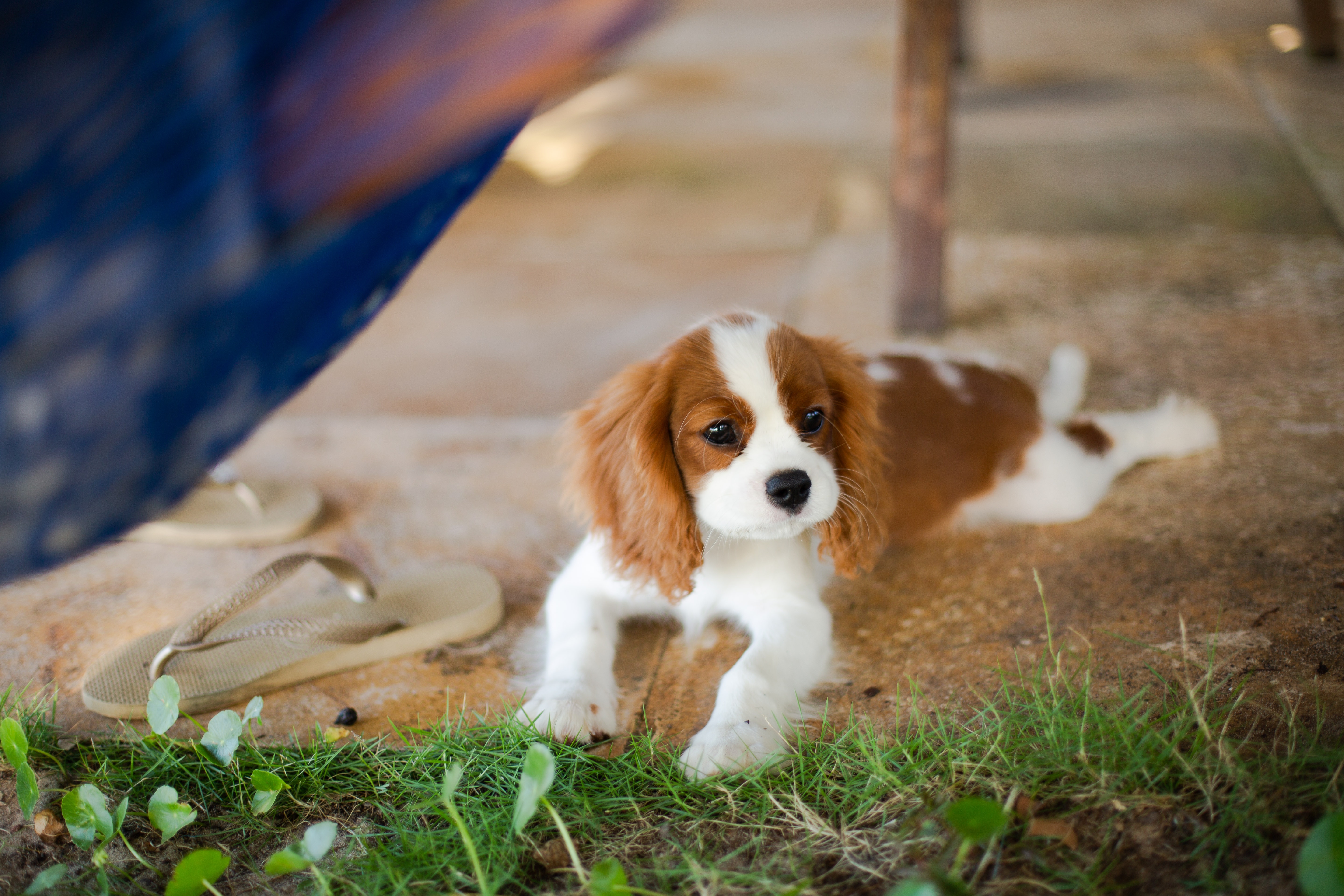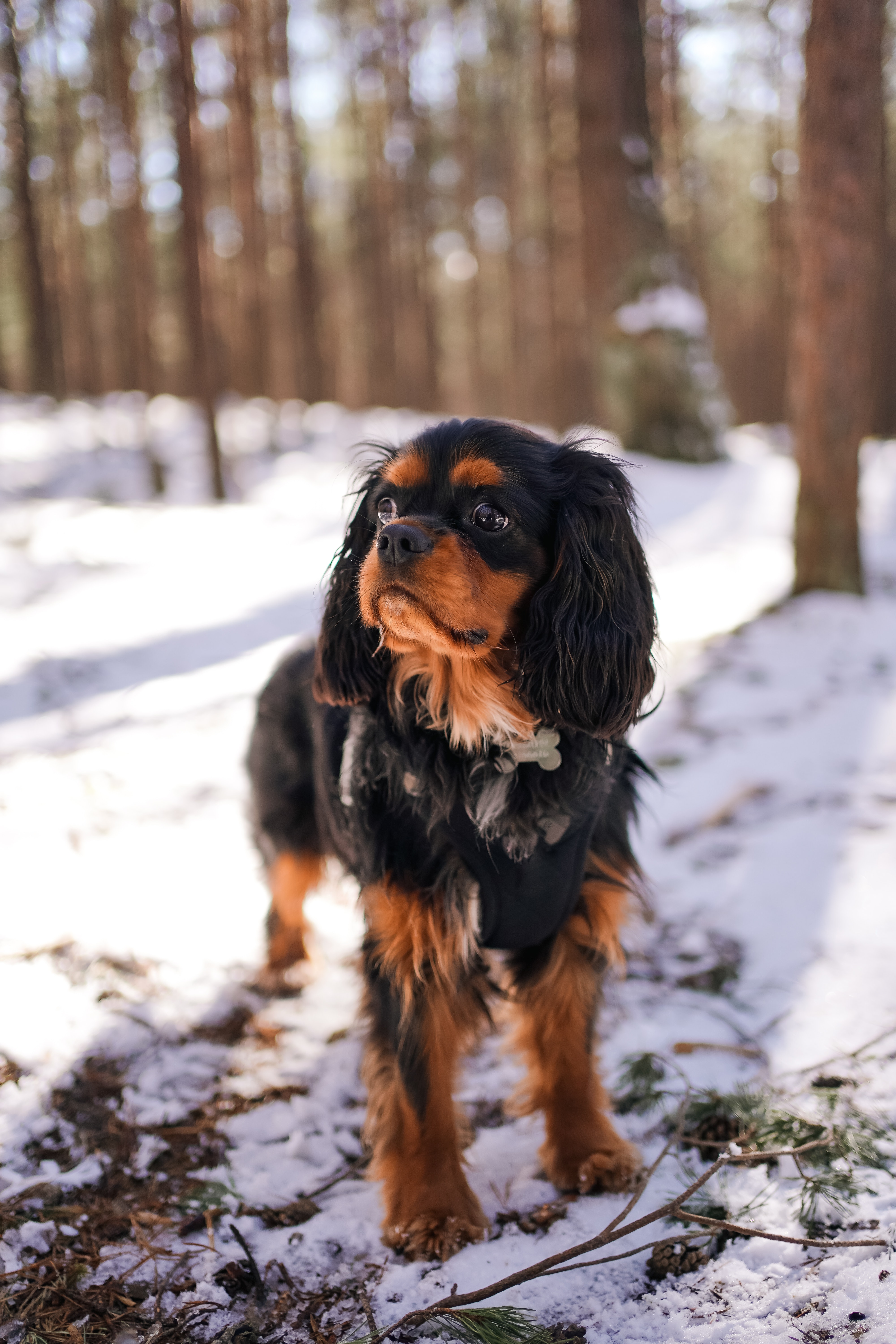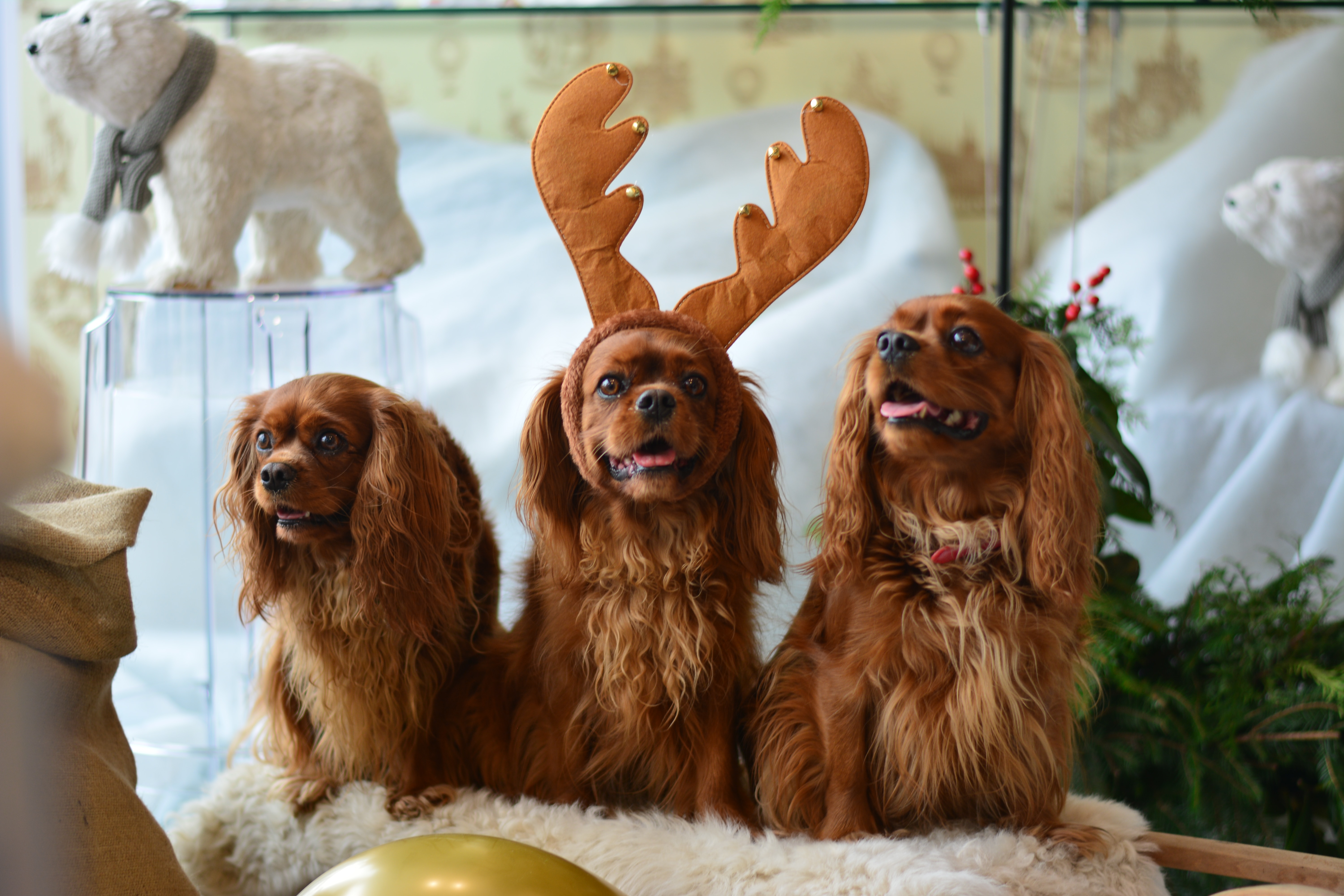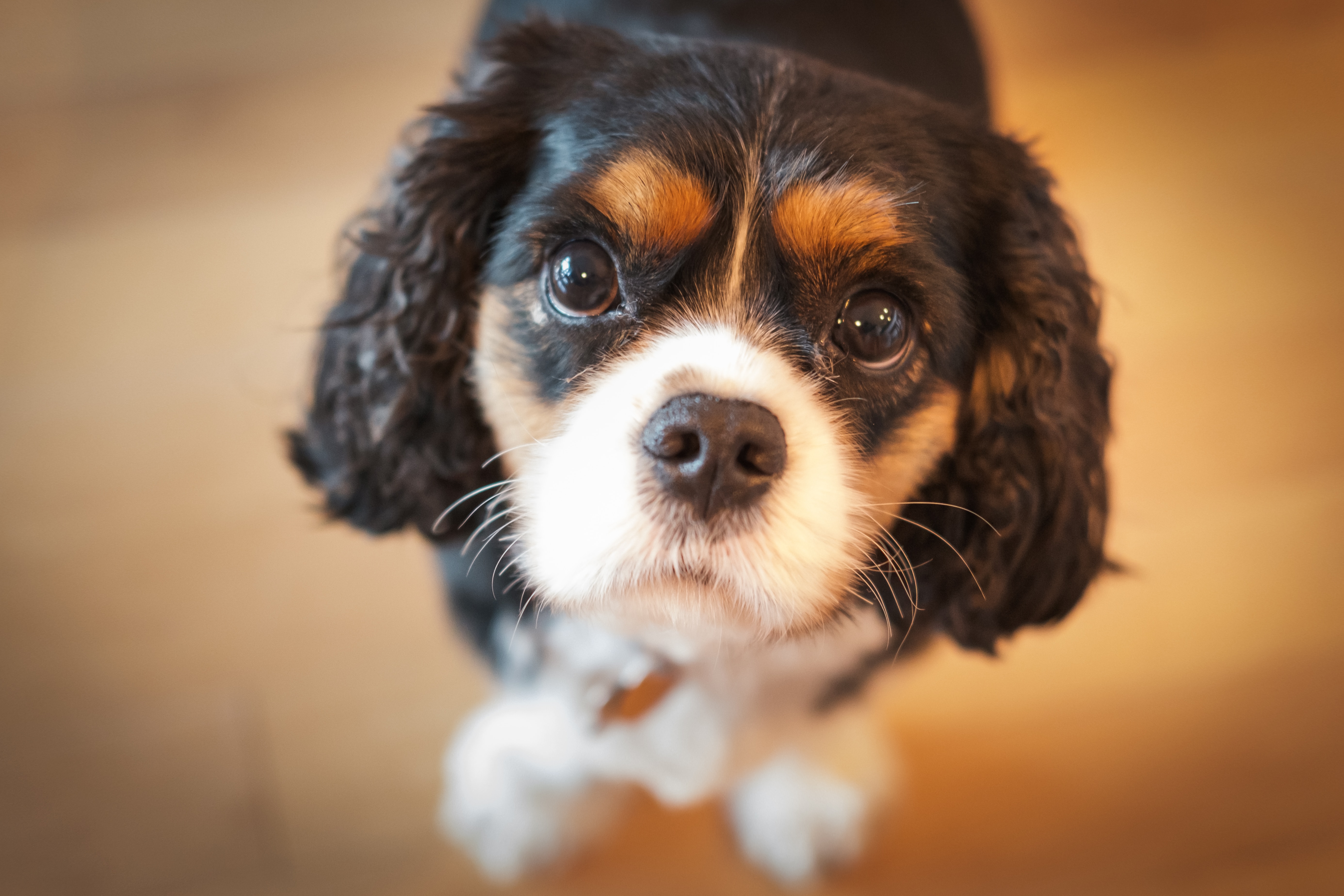
Cavalier King Charles Spaniels are a charming and affectionate breed, well-known for their beautiful coats and delightful expressions. As an integral aspect of their appearance, the colors and patterns of their coats are a topic of great interest among enthusiasts and prospective owners alike.
This article will delve into the captivating world of Cavalier King Charles Spaniel colors, exploring the different shades and patterns that grace this breed. We'll also discuss the unique characteristics of each color and the breed standards outlined by various kennel clubs. So, whether you're a proud owner of a Cavalier King Charles Spaniel or simply an admirer, you'll enjoy discovering the stunning array of colors that these lovely dogs possess.
Table of Contents
The Four Recognized Colors
Blenheim

The Blenheim coat, named after the historic Blenheim Palace in England, is a stunning combination of rich chestnut markings on a pearly white background. This iconic color pattern is often associated with the Cavalier King Charles Spaniel, as it is one of the most sought-after and visually striking varieties.
The Blenheim coat is characterized by well-defined chestnut patches evenly distributed across the body, with the ideal pattern showcasing a symmetrical "lozenge" or spot on the forehead. This distinctive feature, known as the "Blenheim spot," is highly desirable and adds a unique touch to this already captivating coat.
Originating from the breeding efforts of the Dukes of Marlborough in the 18th century, the Blenheim Cavalier has a rich history and connection to English nobility. As such, this color pattern holds a special place in the hearts of Cavalier enthusiasts and breeders alike.
Black and Tan (King Charles)

The Black and Tan, also known as the King Charles coloration, is another striking pattern found in Cavalier King Charles Spaniels. This coat features a glossy black base with rich tan markings above the eyes, on the cheeks, inside the ears, and on the chest, legs, and underside of the tail. The striking contrast between the deep black and vibrant tan creates a regal and elegant appearance that is hard to resist.
This color pattern is a nod to the breed's royal connections, being named after King Charles II, who was known for his fondness for these charming dogs. The Black and Tan Cavalier King Charles Spaniel carries an air of nobility, making it an excellent choice for those who appreciate the breed's royal heritage.
Ruby

The Ruby Cavalier King Charles Spaniel is a true gem, adorned in a solid, rich, and deep red coat. This enchanting color is devoid of any white markings or patches, giving the Ruby Cavalier a uniform and sleek appearance. The mesmerizing hue of their coat often captures the hearts of dog lovers, adding to their overall allure.
The history of the Ruby Cavalier is intertwined with that of the other color varieties, as they all share the same noble lineage. The Ruby coat color adds a touch of sophistication and charm to the breed, contributing to the diverse palette of Cavalier King Charles Spaniel colors.
Tricolor (Prince Charles)

The Tricolor, or Prince Charles variety, is a captivating mix of black, white, and tan that beautifully accentuates the features of the Cavalier King Charles Spaniel. This coat pattern showcases a predominantly black and white base, with the white often forming a distinct "bandit mask" around the eyes. The tan markings, found above the eyes, on the cheeks, and on the underside of the ears, add an extra layer of depth and contrast to the overall appearance.
The Tricolor Cavalier pays tribute to the breed's royal connections, bearing the name of Prince Charles. With its harmonious blend of colors and intricate markings, the Tricolor Cavalier King Charles Spaniel stands out as an eye-catching and endearing member of this beloved breed.
RELATED: Cavalier King Charles Spaniel Breed Information
Breed Standards and Coat Colors
American Kennel Club (AKC) standards
The American Kennel Club (AKC) is a prominent organization that sets breed standards for many dog breeds, including the Cavalier King Charles Spaniel. According to the AKC, the breed is recognized in four distinct coat colors: Blenheim, Black and Tan, Ruby, and Tricolor. The organization emphasizes the importance of rich and clearly defined colors, with the coat being long, silky, and free from curl.
RELATED: AKC Cavalier King Charles Spaniel Breed Standard
United Kennel Club (UKC) standards
The United Kennel Club (UKC), another influential dog breed registry, also acknowledges the four main coat colors of the Cavalier King Charles Spaniel. The UKC breed standard highlights the importance of well-distributed markings and the absence of white in the Ruby and Black and Tan varieties. Additionally, the UKC values a coat that is medium-length, silky, and without curl or an undercoat.
RELATED: UKC Cavalier King Charles Spaniel Breed Standard
Fédération Cynologique Internationale (FCI) standards
The Fédération Cynologique Internationale (FCI) is an international federation of kennel clubs that sets breed standards for numerous dog breeds globally. The FCI breed standard for the Cavalier King Charles Spaniel recognizes the same four coat colors as the AKC and UKC. In addition to the color requirements, the FCI standard also emphasizes the importance of a coat that is long, silky, and free from curl, with feathering on the ears, legs, and tail.
RELATED: FCI Cavalier King Charles Spaniel Breed Standard
Other breed clubs and their standards
Various Cavalier King Charles Spaniel breed clubs around the world may have their own specific breed standards, but generally, they adhere to the guidelines set by the aforementioned organizations. The primary focus remains on the four recognized coat colors and patterns, as well as the quality and texture of the coat itself. These breed clubs play a crucial role in maintaining the breed's beauty and consistency while fostering a community of passionate owners and breeders.
Coat Care and Grooming
General grooming tips for Cavalier King Charles Spaniels
Cavalier King Charles Spaniels, with their luxurious coats, require regular grooming to maintain their appearance and overall health. Regardless of their coat color, these beautiful dogs benefit from a consistent grooming routine that includes brushing, bathing, and trimming.
Brushing
To prevent mats and tangles, brush your Cavalier's coat at least two to three times a week using a slicker brush or a comb with both wide and narrow teeth. This not only removes loose hair and dirt but also helps distribute natural oils, ensuring a healthy and shiny coat.
Bathing
Cavaliers should be bathed every four to six weeks, using a gentle dog shampoo that won't strip the coat of its natural oils. Be sure to rinse thoroughly to avoid any residue that might cause irritation.
Trimming
Regular trimming of the hair around the ears, paws, and sanitary areas can prevent matting and keep your dog looking neat. Additionally, it's essential to trim your Cavalier's nails regularly to avoid discomfort or injury.
Ear care
Due to their long, floppy ears, Cavaliers are prone to ear infections. Regularly check and clean your dog's ears with a gentle ear-cleaning solution to prevent buildup and maintain good ear health.
RELATED: Grooming your Dog at Home Guide
Specific grooming considerations for each color and pattern
While general grooming practices apply to all Cavaliers, there are some specific considerations for each coat color and pattern:
Blenheim
The white areas of a Blenheim Cavalier's coat may be prone to staining, especially around the mouth and eyes. Regularly wiping these areas with a damp cloth or using tear stain remover can help keep the coat looking clean and bright.
Black and Tan
The contrast between the black and tan markings in this color variety can become less distinct over time if not properly maintained. Regular brushing and grooming can help preserve the vibrant colors and keep the coat looking its best.
Ruby
The solid red coat of a Ruby Cavalier may be more prone to fading due to sun exposure. Limiting prolonged sun exposure and using a gentle, color-safe shampoo during baths can help maintain the rich red hue.
Tricolor
The intricate markings of a Tricolor Cavalier may require extra attention during grooming to ensure the coat remains tangle-free, particularly in the areas where the colors meet.
RELATED: Everything You Need to Know About Puppy Color Changes
Health and Genetics of Coat Colors
Genetic factors influencing coat colors
The captivating coat colors of Cavalier King Charles Spaniels are the result of a complex interplay of genes inherited from their parents. Specific genes determine the base color, while others control the distribution of markings and patterns. Understanding the genetics behind coat colors can help breeders make informed decisions when planning matings and help owners appreciate the unique beauty of their dogs.
Base color: The base color of a Cavalier's coat is determined by the interaction between the Agouti (A), Extension (E), and Brown (B) genes. These genes influence the production and distribution of pigments like eumelanin (black) and phaeomelanin (red/yellow).
Markings and patterns: The presence and distribution of markings and patterns in Cavaliers are influenced by the genes governing the spotting (S) and Ticking (T) loci. These genes determine the appearance of white markings and the presence of ticking or flecks of color within the white areas.
Inheritance: Coat color inheritance in Cavaliers follows the principles of Mendelian genetics, with each parent contributing one copy of each gene to their offspring. By understanding the potential combinations of these genes, breeders can predict the range of coat colors that might appear in a litter.
RELATED: See Available Cavalier King Charles Spaniel Puppies From Top Breeders
Potential health issues related to coat colors
While coat color in Cavalier King Charles Spaniels is primarily a cosmetic feature, it's essential to be aware of potential health concerns related to specific coat colors. Some color-linked health issues include:
- Color Dilution Alopecia (CDA): Although rare in Cavaliers, this genetic condition can result in hair loss and skin issues in dogs with dilute coat colors, such as lighter shades of Ruby. Responsible breeding practices can help minimize the risk of this condition.
- Sensitivity to sunlight: Dogs with lighter coat colors, such as Blenheim and Ruby, may be more prone to sunburn and heat sensitivity. Owners should take precautions to protect their dogs from excessive sun exposure and provide ample shade during outdoor activities.
- Allergies and skin issues: While not directly related to coat color, skin issues and allergies can affect Cavaliers of any color. Regular grooming and monitoring your dog's skin condition can help prevent and address any skin-related concerns.
Conclusion
The world of Cavalier King Charles Spaniel colors is as enchanting as the breed itself. With a captivating array of hues and patterns, including the iconic Blenheim, the regal Black and Tan, the mesmerizing Ruby, and the striking Tricolor, these dogs truly embody a unique blend of beauty and charm.
As we've explored in this article, the coat colors of Cavalier King Charles Spaniels are influenced by a complex interplay of genes. Knowledge of the genetics behind these colors can help breeders make informed decisions and ensure the breed's health and vitality. It's also essential to be aware of potential health concerns related to specific coat colors and take necessary precautions to protect your Cavalier.
Proper coat care and grooming are vital to maintaining the health and appearance of your Cavalier King Charles Spaniel, regardless of their color. By following the grooming tips and recommendations outlined in this article, you can help your dog maintain a vibrant and healthy coat that showcases their unique beauty.
Ultimately, the beauty of Cavalier King Charles Spaniel colors lies in their diversity and the joy they bring to dog lovers worldwide. By understanding the importance of coat colors, appreciating the breed's standards, and implementing proper care and grooming practices, you can ensure that your Cavalier King Charles Spaniel remains a shining example of this beloved breed.
Scroll down to see FAQs about Cavalier King Charles Spaniel colors!
What To Read Next
Pomeranian Colors: Exploring the Vibrant World of Pom Coats
15 Best Dog Breeds for First-Time Owners
Frequently Asked Questions
What are the different colors of Cavalier King Charles Spaniels? Cavaliers come in four recognized coat colors: Blenheim, Black and Tan, Ruby, and Tricolor. Each color has its own unique charm and appeal, contributing to the breed's diverse beauty.
What is the rarest color for Cavalier King Charles Spaniels? The rarest color among Cavaliers is typically considered to be the Ruby variety. This solid, rich, and deep red coat is less commonly seen than the other coat colors in the breed.
What are the 4 colors of Cavaliers? The four recognized colors of Cavalier King Charles Spaniels are Blenheim (chestnut markings on a white background), Black and Tan (black coat with tan markings), Ruby (solid deep red coat), and Tricolor (black, white, and tan coat).
What is Blenheim color? The Blenheim color is a stunning combination of rich chestnut markings on a pearly white background. This iconic pattern often features a distinctive "Blenheim spot" or "lozenge" on the forehead, adding a unique touch to the coat.
What Color Cavalier is the most popular? The most popular color for Cavalier King Charles Spaniels is often considered to be the Blenheim variety, due to its striking appearance and strong association with the breed's history and English nobility.
What is a Ruby Cavalier? A Ruby Cavalier is a Cavalier King Charles Spaniel with a solid, rich, and deep red coat. This enchanting color is devoid of any white markings or patches, giving the Ruby Cavalier a uniform and sleek appearance.
Do Cavaliers have hair or fur? Cavaliers have hair, which is characterized by its long, silky, and luxurious texture. Unlike fur, hair generally grows longer and requires more frequent grooming to maintain its appearance and prevent matting.



